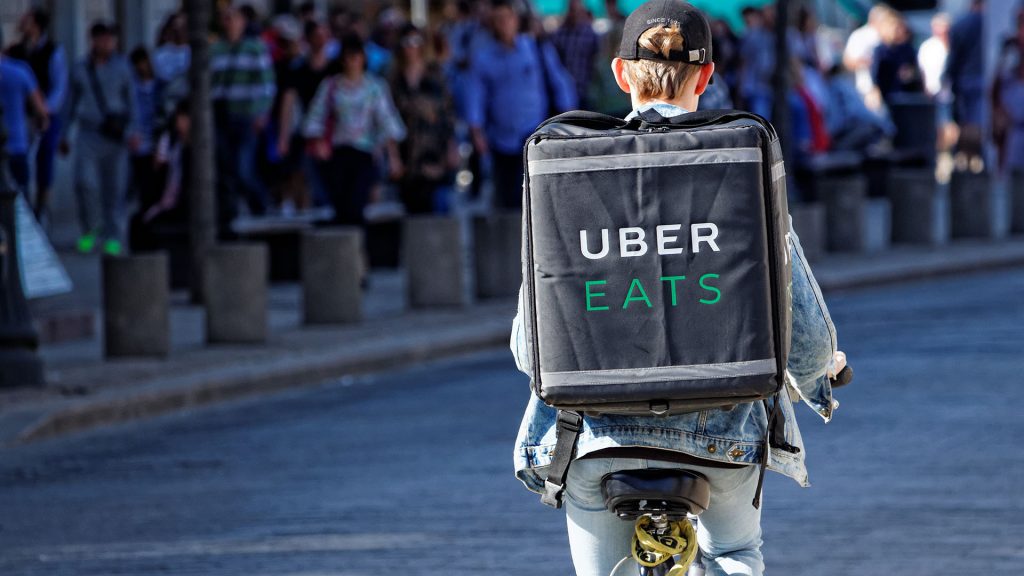Bloomberg reported today that Uber may be in early talks to acquire Deliveroo, a key competitor for its food delivery line UberEats, in the European market.
According to the report, Deliveroo had been in financing talks last year with SoftBank Group Corp., one of Uber’s major investors. However, “the negotiations abruptly ended after SoftBank concentrated on backing Uber.”
Online breadcrumbs point to an ongoing concentration on business lines outside of Uber’s core ride-hailing, as well as a strategy centered around aggressively acquiring competitors and a growing focus on the EMEA market.
If you can’t beat ‘em, buy ‘em.
Following in the footsteps of its parent brand, Uber Eats has started to look at acquisitions as a way of beating out the competition, purchasing Momofuku chef David Chang’s Ando, a delivery-only restaurant, earlier this year. The ride-hailing line, on the other hand, is no stranger to acquisitions, including its recent purchase of Jump Bikes in an effort to enter the bike-sharing space.
After selling off business lines throughout Asia, the strategy is shifting toward acquisition more heavily, in an effort to avoid conceding any more local markets. It’s currently in acquisition talks with Middle Eastern ride-sharing rival Careem, according to the same Bloomberg report.
Deliveroo would be a major acquisition for the brand. Valued above $2B in its last round, with a presence in 200 cities across 4 continents, Deliveroo is one of Europe’s biggest startups and last year raised about $480 million.

Following Uber’s exit in the SouthEast Asian market to competitor Grab, it’s possible the brand is beginning to understand that its best bet to compete in local markets is likely acquisition of a home grown business that understands the market well.
Following the breadcrumbs
Uber has made its Eats arm a priority, a strategy recently announced by CEO Dara Khosrowshahi as the brand heads toward IPO in late 2019. It makes sense, as the brand has started to see a decline in growth rates, as demonstrated in its Q2 report. Continued spending on the ride-sharing portion of the company has contributed to some significant losses as of late. According to CNBC, the company has been spending between $125 million and $200 million over the past 18 months on self driving, which is equal to 15% to 30% of Uber’s quarterly losses.
Eats, on the other hand, has continued to gobble up market share as the fastest growing food delivery service in the US, honing in on long time market leader GrubHub. This growth is credited in large part to the brand’s recent partnership with McDonald’s. According to Buzzfeed, Uber Eats now delivers from nearly 7,000 McDonald’s locations in 20 different countries.
Across the Atlantic, Uber Eats is really starting to take off, with an aggressive growth strategy announced earlier this year, citing plans to launch in 100 new cities across EMEA, including 40 cities in the UK, 35 in France and a debut in Ireland.
In terms of growth and profitability, the Uber Eats arm, nestled under Uber Everything (read: everything-except-ride-hailing), is outperforming the brand’s core business line. Eats is on track to do $6B in bookings this year, with growth rates of around 200% per year, and it’s said to be profitable in 25% of its markets.
What gives Eats such a leg up over the competition? Its built-in logistics network and on-the-ground operational team established globally. According to Jason Droege, Head of Uber Eats, on Eater’s Upsell Podcast, “Roughly 10 percent of restaurants in the world do their own delivery today. So how do you get the food from the other 90 percent of restaurants? What we’ve done with Eats is we’ve armed them with the logistics network. The driver network we have on Rides allowed all those drivers to opt in to become Eats drivers in the US so that we can power delivery for all the other restaurants. And we’ve done that globally.”
Deliveroo’s bid for market dominance
Deliveroo has been creatively working its way toward market dominance in Europe. In an aggressive growth strategy across the UK and an effort to beat out competitor Just Eat, the brand has opened itself up to partner restaurants who have their own fleet of drivers as they commit to adding 5k more UK restaurants in 2018.
Its new Marketplace+ will offer restaurants with their own drivers the ability to tap into Deliveroo’s network of riders to extend their delivery services and support faster delivery times if they choose.
According to The Telegraph, Deliveroo currently employs 35,000 delivery riders worldwide, 15,000 of which are in the UK. As well, according to TechCrunch, its UK market as a whole is already profitable; and its core service achieved growth of 650% globally in 2017.
What the customers are saying
Here’s a look at customer sentiment on social media around the two brands, across major European countries over the last month. Conversations around Deliveroo appear to be consistently more positive than those of their growing competitor.

Specifically in the UK, Deliveroo’s HQ, search queries for “food delivery” have steadily increased over the last few months, with growing quantity coming from mobile.


A comparison of search for Ubereats vs Deliveroo in the same market, as measured against “food delivery” overall, shows Ubereats beginning to close the gap, moving in on Deliveroo, until the last month where we see a spike in Deliveroo’s lead. This is likely due to the brand’s recent increase in spend on paid search in the UK.


What’s next?
Brands in the food delivery business globally will be watching Uber with their eyes peeled, as the giant continues to leverage the strength of its global logistics network to hone in on, or potentially buy out, competition across key markets.
Acquisition of Deliveroo has not yet been confirmed, but if it does go through, it will be interesting to see its potential impact on Uber’s coming IPO, said to be set for 2019.

